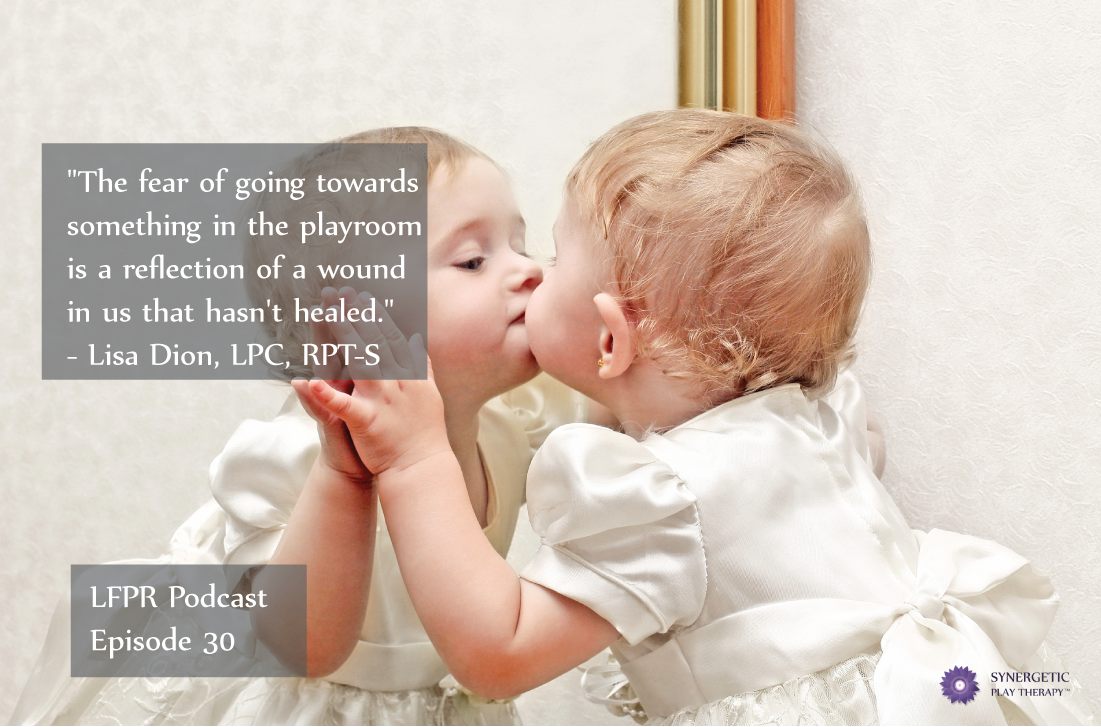Mirror Mirror on the Wall: The Client is You After All
As play therapists, we’re often taught to check ourselves at the door. But, when the child’s challenges reflect our own, this is difficult for even the most seasoned clinician. What happens when we embrace the mirror and tap into our humanness? You just might experience some of the most powerful sessions when you see yourself in your client’s struggle.
1:14 Lisa introduces the Lessons from the Playroom Series
1:39 There are many ways we see ourselves inside the playroom
2:38 This topic came from the idea of a listener – please let us know if you have ideas too!
3:19 We’re taught to keep ourselves separate from the child’s experience, but is this ideal?
4:04 Information exchanged between therapist and child is inevitable
4:31 You will feel emotions whether you like it or not
4:44 You can’t avoid feeling things when you’re in relationship
5:51 The importance of interpersonal biology
6:33 Synergetic Play Therapy inside the playroom
6:59 You can’t avoid transference or countertransference
7:50 The importance of using breath and mindfulness
8:29 What is the danger of removing yourself too much from the process?
9:17 Lisa shares her play therapy journey
10:54 The fear of sitting with yourself
11:45 What client do you hope does not show up in your playroom?
12:05 We attract clients we can help and we can often help them because the issue resonates with us
13:13 What is it about a client that makes you nervous?
14:30 Lisa shares her personal experience of her “mirror mirror”
16:00 The importance of being vulnerable in the playroom
18:30 There is power in being human
19:50 Having compassion with yourself is vital
20:30 Your life journey is an asset in the playroom
21:00 Self-care needs to happen throughout the day, not at just the beginning and end
22:30 It’s okay to be affected
22:39 Your clients can tell you a lot about yourself!
23:13 Remember, you’re the most important toy in the playroom!





